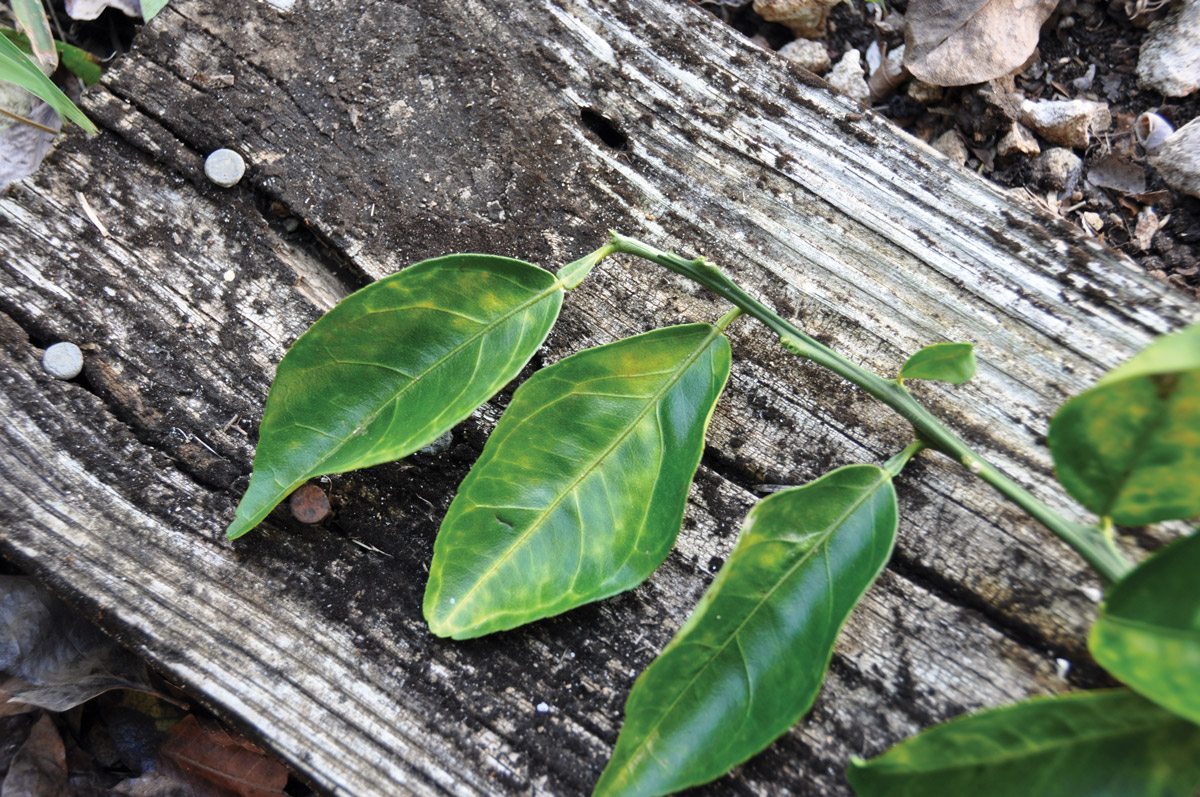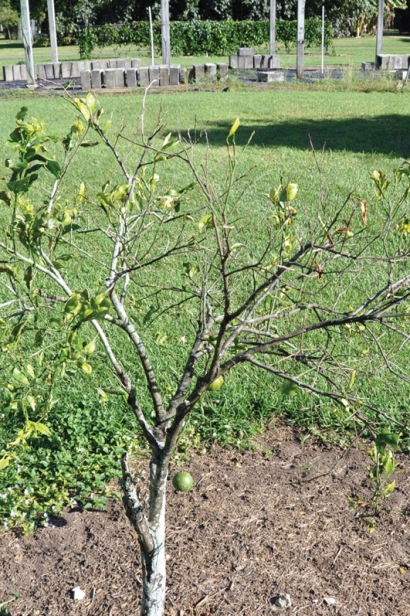Greetings, Citrus Greening! (Your Tree Is Probably Infected)
Winter is citrus season in South Florida, but there’s little celebration. Chances are your backyard orange tree is infected with the deadly disease that’s devastating the state’s multi-billion dollar citrus industry.
Citrus greening, a debilitating disease also called Huanglongbing or HLB, currently has no cure. Once a tree is infected with the bacterium believed to cause greening, it begins to slowly decline. The fruit quality will markedly drop as the fruit become deformed and lose flavor. The disease, spread by small insects called psyllids, was first confirmed in South Florida in August 2005.
Citrus greening is bad, bad news and has been wreaking havoc in the central part of the state where the vast majority of Florida’s commercial citrus is located. Locally, commercial growers are planting limes, which are thought to be somewhat tolerant of the disease, but many backyard growers are being hit badly by greening. They may not even be aware of why their trees are declining.
Telltale Signs of Citrus Greening
Remedies
Most citrus trees in South Florida already have citrus greening and there are no cost-effective treatments available to manage a sick tree. You can try to keep your trees as healthy as possible through proper horticulture and micro-element applications, but this is not a solution.
You can still buy citrus trees in South Florida. But when you do, you’re likely setting yourself up for failure and eventual disappointment. This is the time to plant other fruit trees – mangos, sapodillas, longans, jackfruit, mameys, tamarinds, spondias and carambola – that have very few pest and disease problems and can produce fruit with minimal input.
Looking Ahead
Orange juice will not disappear forever from your breakfast table as some headlines would lead you to believe. Commercial growers, UF/IFAS and the USDA are collaborating to select and plant citrus greening-tolerant rootstocks and varieties. If there’s one thing my job as a commercial tropical extension agent has taught me, it’s that the farmer will always find a way. We may see healthy citrus in South Florida in the not too distant future.
For more information on citrus greening, visit the UF/IFAS Citrus Extension’s website.
Questions about your tropical fruit trees? Call a UF/IFAS extension agent at 305-248-3311. Homeowners: Adrian Hunsberger (ext. 236); commercial tropical fruit growers: Jeff Wasielewski (ext. 227); commercial vegetable growers: Qingren Wang (ext. 234).







